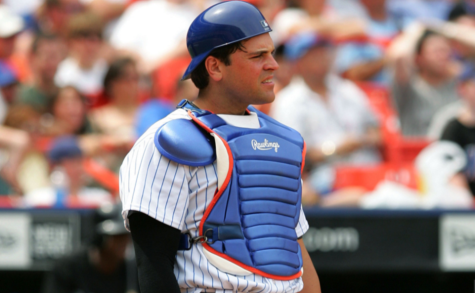
This offseason, we’re looking at the Mets’ history with free agency. This list may change in the coming years in terms of rankings and new additions (Maybe Carlos Correa? Possibly Justin Verlander?). But for now, we’ve featured an underdog pitcher at No. 10 up to the greatest center fielder at No. 2. And at the top of the list is a player who joined the team mid-season via trade on the last year of his contract. The decision to re-sign him paid off right away and his number has a permanent place in the Citi Field rafters.
He came to New York after a whirlwind week. The trade for Mike Piazza transformed the Mets from being an overachieving team looking to contend into a legitimate contender.
Overcoming expectations and boos from fans, Piazza put together a terrific four months. He finished the 1998 season batting .348 with a 167 OPS+. The Mets wound up a game short of the postseason and with Piazza’s contract expiring, the trade and all expectations going forward would be nullified if the star catcher didn’t stay in New York.
This didn’t turn out to be a prolonged drama. Proving he had won over a good portion of a fan base that demanded plenty, an e-mail signed by 10,000 names was sent to the club urging Piazza be re-signed. In late October, Piazza inked a seven-year, $91 million deal — the richest in baseball at the time.
“I might as well get booed by the best if I was going to get booed by anyone,” Piazza said.
What followed would be two straight playoff appearances and a World Series trip, six All-Star Game selections, the confirmation of a Hall of Fame career and the greatest hitting catcher while in a Met uniform, and the retirement of his No. 31 jersey.
He still holds the highest slugging percentage in team history, ranks second in OPS, and third in home runs. Of his 220 homers, none was more memorable or dramatic than the one hit in the first game in New York City following the attacks on September 11, 2001.
Piazza is a Big Apple icon, but his career was made for Hollywood. As a 62nd round pick by the Dodgers, he came from nowhere to become Rookie of the Year and the premiere backstop in baseball. Los Angeles dealt Piazza to the Florida Marlins, where he spent all but five games in teal before finding his way to Queens.
Standing ovations were easy to come by in his May 23 debut — less so in the following weeks. Being anointed as a savior, as Piazza was from the start, had its drawbacks. When he started slowly, with a noticeable lack of power, the public turned on him.
Mike soon settled down and played to the level expected of him. He would hit 23 home runs and compile a 1.024 OPS. In batting .378 for September, Piazza was the clear catalyst in New York’s fight for a postseason berth.
The mega-deal ensured he would be a New Yorker through his prime. The next three years was validation of the team’s heavy investment.
Piazza averaged 38 homers and 110 RBIs from 1999-2001, had an OPS+ of 146, and continued to be a perennial All-Star and Silver Slugger. He got within one step of the World Series in 1999 and finally arrived in 2000. There would be no rings, but Piazza built a legacy that made him arguably the greatest position player in Mets history.
As is customary for any catcher, Mike’s production decreased as he reached his mid-30s. By 2005, the once-record deal from 1998 was ending. And with the Mets in transition, it was clear that this was his end in orange and blue. On October 2, 2005, in front of nearly 48,000 at Shea Stadium, Piazza bid farewell amid multiple curtain calls and an eight-minute standing ovation from the appreciative crowd. No boos were heard that day.
Comparably, Mike Piazza’s numbers in Los Angeles make him more productive as a Dodger. But in terms of impact on a franchise, its the Mets hands down.
MMO recently conducted an exclusive interview with Mike Piazza, which you can read right here.















